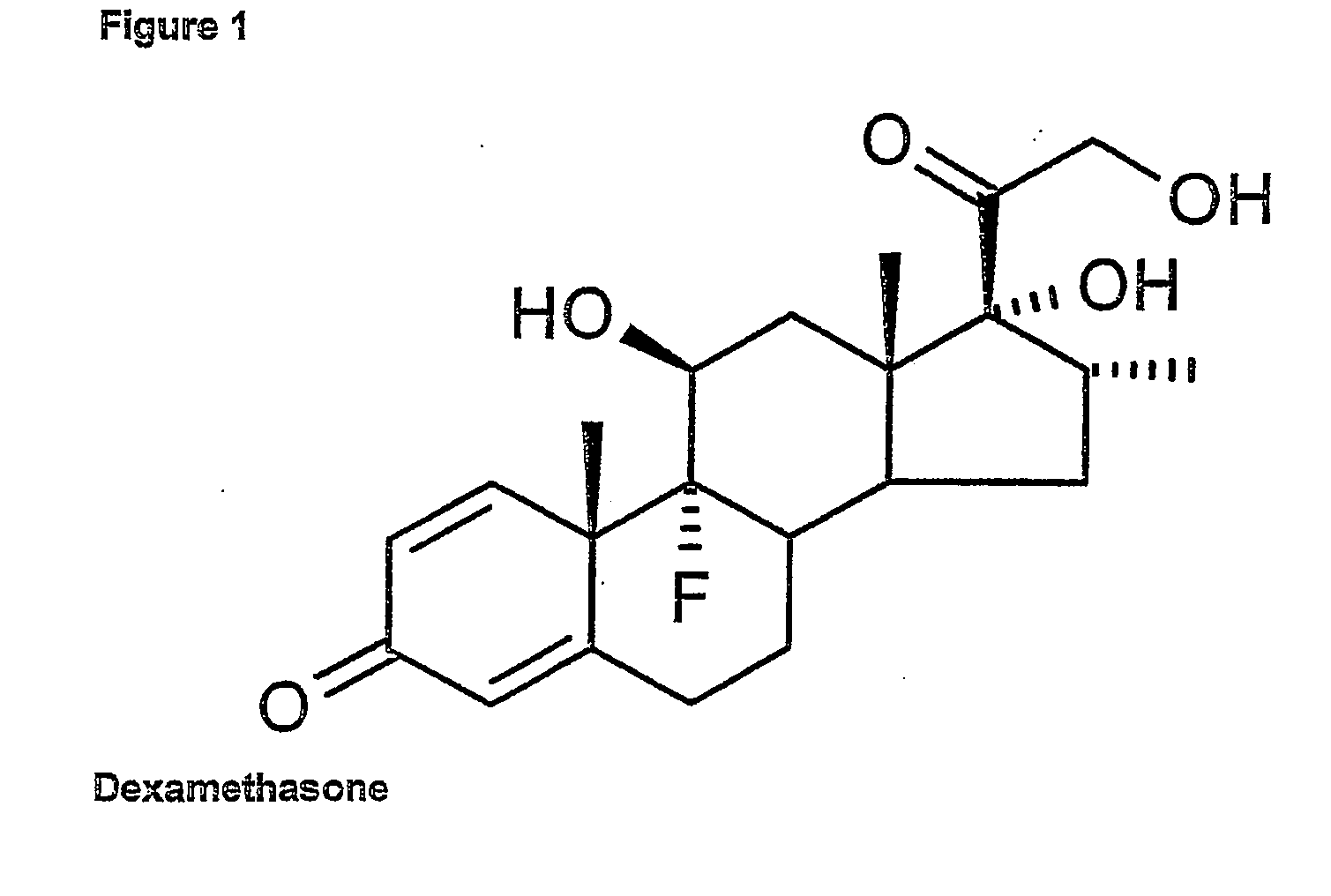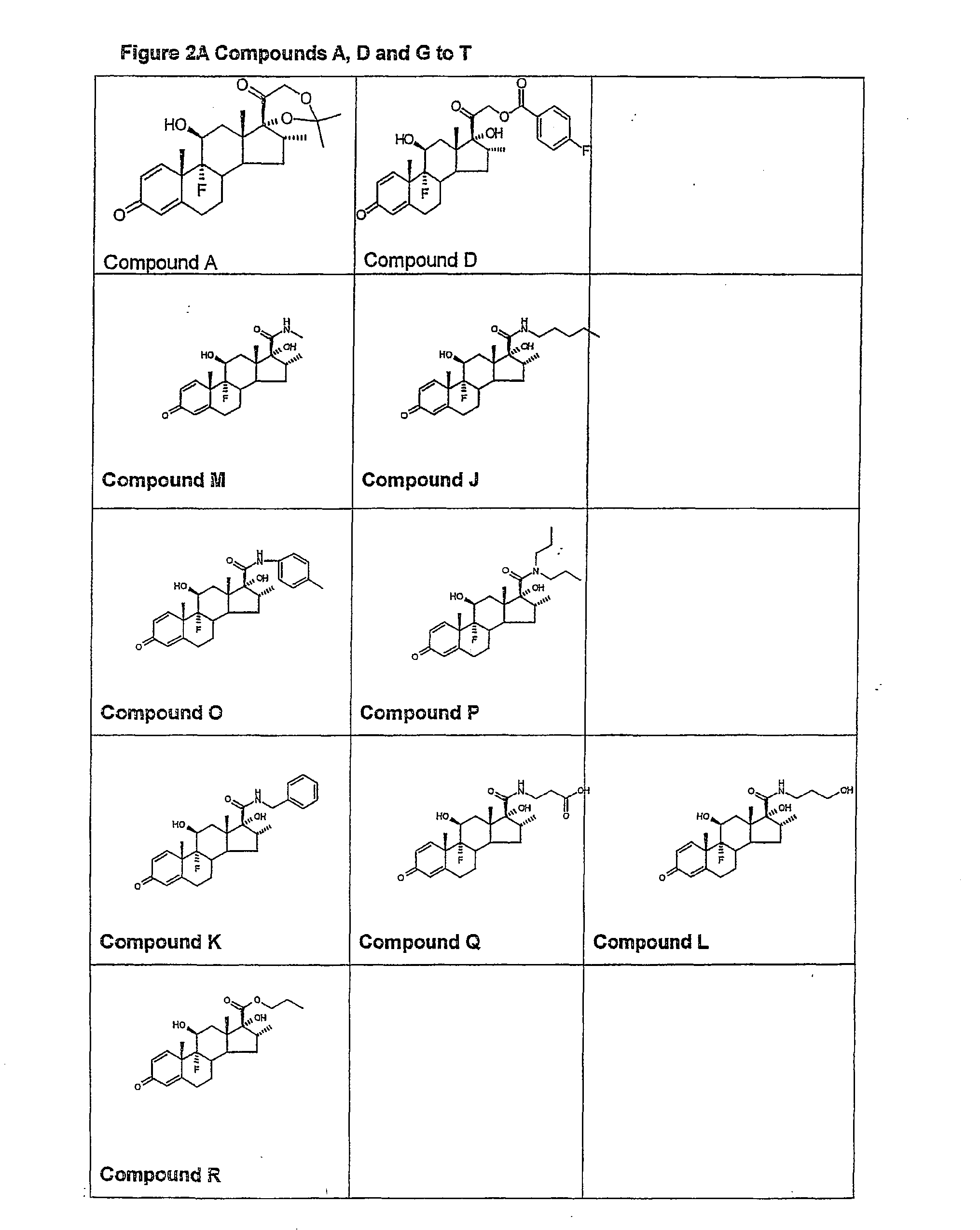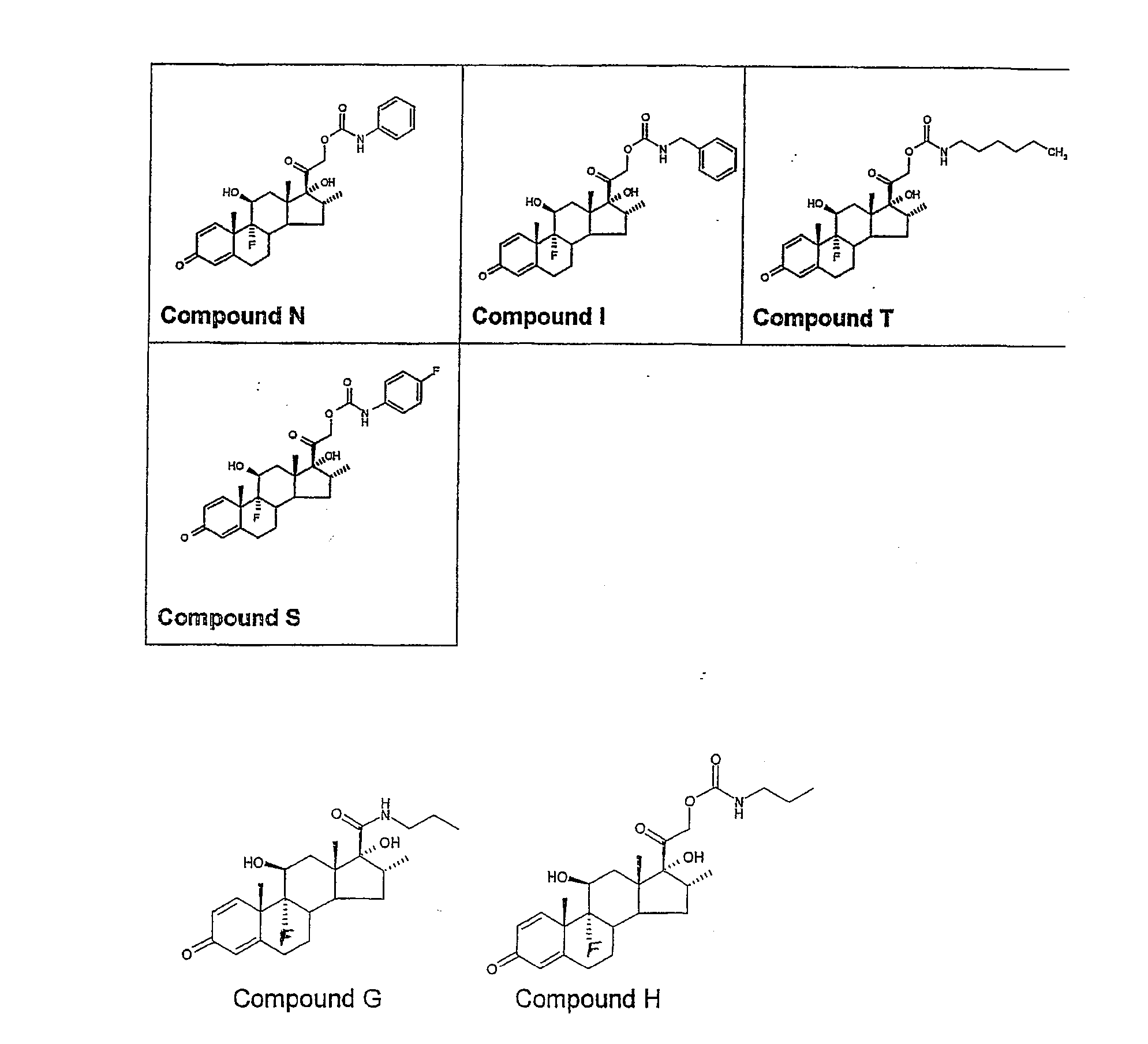Selective glucocorticoid receptor agonists
a glucocorticoid receptor and selective technology, applied in the direction of drug compositions, extracellular fluid disorders, immune disorders, etc., can solve the problems of soft steroids, significant local side effects, and limited use of gcs, especially in inflammatory diseases
- Summary
- Abstract
- Description
- Claims
- Application Information
AI Technical Summary
Problems solved by technology
Method used
Image
Examples
example 2
Fitting of Ligand Within the Predicted Structure
[0048] The structure of Dexamethasone was obtained from the Cambridge Structural Database (CSD). We predict that the ligand binding pocket is a longitudinal cleft with two polar residues at one end and a single polar residue at the opposite end. We cannot determine with absolute certainty the orientation of the ligand within the pocket, but several lines of evidence support the orientation of the steroid A ring at the Arg611 end of the pocket. The ligands for both the ER and the PR are orientated in this manner, and both cortisol and aldosterone within the mineralcorticoid receptor are predicted to be in this orientation, based on modelling and mutagenesis studies. The ligand interaction with the receptor was detected using the Ligplot programme, which was also used to plot the interaction. Based on this analysis we predict that the ligand binding domain of the hGR has a three-layered, antiparallel, 12 ∀ helical structure, which is hi...
example 3
Affinity of Mutant Human GR for Dexamethasone
[0049] As Tyr735 was predicted to have hydrophobic interaction with the D ring of Dexamethasone it was important to identify changes in ligand binding affinity caused by the mutations at position 735. Site-directed mutagenesis to phenylalanine (Tyr735phe) resulted in no alteration in ligand binding affinity (4.3 nM compared to 4.6 nM for wild-type), in keeping with the hypothesis that the benzene ring is sufficient to generate a hydrophobic surface for ligand interaction. Change to valine (Tyr735val) resulted in lower affinity binding compared to wild-type, but only to a minor degree (6 nM). The change to serine (Tyr735ser), however, resulted in a two-fold reduction in ligand binding affinity (10.4 nM).
[0050] All the mutant receptors were expressed in COS 7 cells, and the mutations did not alter receptor numbers per cell.
example 4
Transactivation by Mutant GR
[0051] All three mutant GR molecules were capable of transactivating the MMTV promoter. In response to Dexamethasone Tyr735phe had a similar EC50 to the wild-type (8.6 nM compared to 6 nM) and Tyr735val a lower EC50 14.8 nM. However, the maximal transactivation potential of both of these two mutant GR molecules was less than the wild-type.
[0052] The EC50 of Tyr735ser for transactivation was increased to 118 nM, and an accurate estimate of the maximal effect was not possible. It is clear that this effect is disproportionate to the doubling of Kd, suggesting that disruption of ligand binding is insufficient alone to explain the observed change in receptor transactivation.
[0053] Further, the physiological ligand hydrocortisone (100 nM) induced 18 fold induction of MMTV via the wild-type GR, 11 fold with the Tyr735Phe, 10.6 fold with the Tyr735Val and failed to induce the reporter via the Tyr735Ser. Thus the mutated receptors have the same rank order of ac...
PUM
| Property | Measurement | Unit |
|---|---|---|
| Molar density | aaaaa | aaaaa |
| Molar density | aaaaa | aaaaa |
| Fraction | aaaaa | aaaaa |
Abstract
Description
Claims
Application Information
 Login to View More
Login to View More - R&D
- Intellectual Property
- Life Sciences
- Materials
- Tech Scout
- Unparalleled Data Quality
- Higher Quality Content
- 60% Fewer Hallucinations
Browse by: Latest US Patents, China's latest patents, Technical Efficacy Thesaurus, Application Domain, Technology Topic, Popular Technical Reports.
© 2025 PatSnap. All rights reserved.Legal|Privacy policy|Modern Slavery Act Transparency Statement|Sitemap|About US| Contact US: help@patsnap.com



